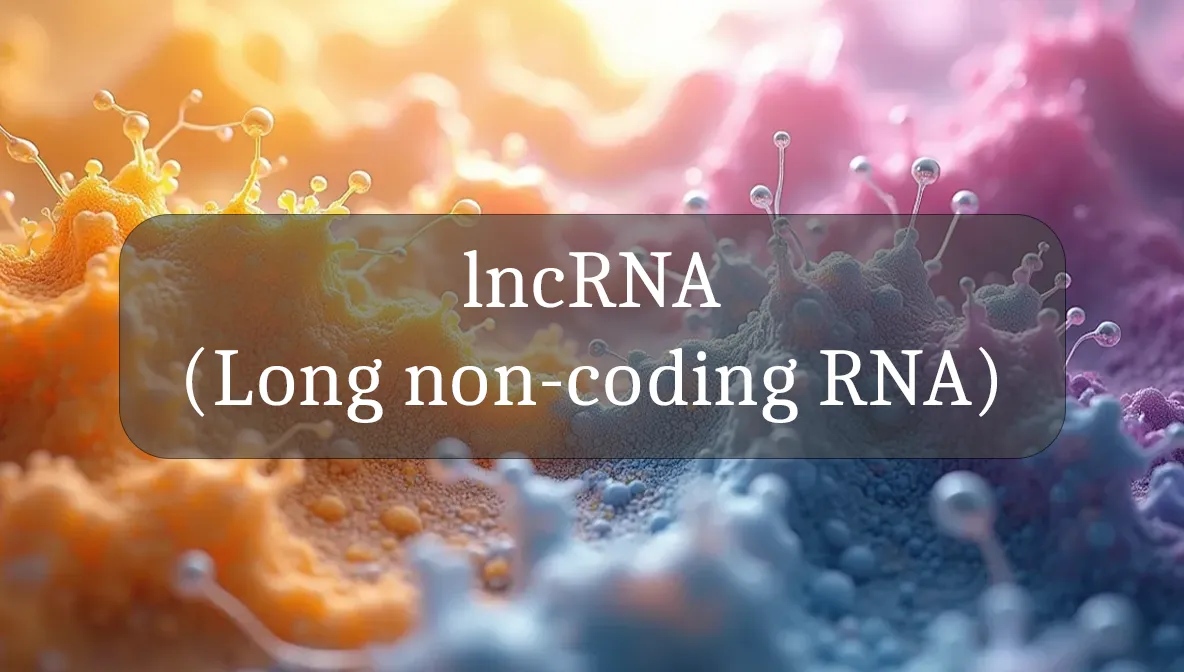Silent Conductors of Your Cell Health
Long non-coding RNA, or lncRNA, might sound like a complex science term, but it’s really just a group of molecules in your cells that act like quiet conductors, guiding how your body grows, heals, and stays balanced. These unsung heroes help regulate your genes without making proteins themselves, playing a big role in your energy, immunity, and overall wellness. For health-conscious folks, understanding lncRNA can inspire choices that keep your cells thriving. Let’s explore what lncRNA is, why it matters, and how you can support it for daily vitality!
Chemical Identity and Type
Long non-coding RNAs (lncRNAs) are a type of RNA molecule, longer than 200 nucleotides, that don’t code for proteins like their cousin, messenger RNA (mRNA). Instead, they’re like master regulators, helping control when and how your genes are turned on or off. Found in the nucleus and other parts of your cells, lncRNAs act like switches or scaffolds, fine-tuning processes like cell growth, repair, and communication. Think of them as the behind-the-scenes coordinators keeping your cells in harmony.
Biological Role and Benefits
LncRNAs are key players in your body’s health and resilience:
- Gene Regulation: They help turn genes on or off, ensuring your cells make the right proteins at the right time for growth and repair.
- Immune Support: LncRNAs guide immune cells to respond effectively to germs, helping you stay healthy.
- Cell Protection: They support cell repair and stress response, protecting against damage that can lead to aging or disease.
- Brain Health: LncRNAs are active in the brain, supporting memory, mood, and cognitive function.
- Metabolic Balance: They help regulate how your body uses nutrients, supporting energy and blood sugar balance.
Healthy lncRNA function means your cells can adapt and thrive, boosting your energy, immunity, and long-term wellness.
Dietary or Natural Sources
You don’t get lncRNA from food—it’s made naturally by your cells. But you can support the processes that keep lncRNA working well with these nutrient-rich choices:
- Antioxidant-Rich Foods: Berries, spinach, and nuts (high in vitamins C and E) protect cells from damage, supporting lncRNA stability.
- Healthy Fats: Omega-3s from salmon, chia seeds, or walnuts nourish cell membranes where lncRNA functions.
- B-Vitamin Foods: Leafy greens, beans, and whole grains provide folate and other B vitamins that support RNA processes.
- Fermented Foods: Yogurt, kefir, or kimchi promote a healthy gut, which may indirectly support lncRNA by reducing inflammation.
A balanced diet creates a cell-friendly environment for lncRNA to do its job.
Signs of Imbalance or Dysfunction
LncRNA dysfunction is tricky to spot directly, but research links it to:
- Fatigue: Feeling drained, as cells struggle with energy or repair processes.
- Weak Immunity: Frequent infections or slow recovery due to poor immune regulation.
- Brain Fog: Trouble with focus, memory, or mood, since lncRNA is key in brain function.
- Chronic Inflammation: Unexplained aches or inflammation, tied to disrupted gene regulation.
- Aging Signs: Premature wrinkles or low energy, as lncRNA helps cells stay resilient.
These symptoms can have many causes, so if they persist, consult a healthcare provider to explore cell health or other issues.
Supporting Optimal Levels or Function
To keep your lncRNA working well, try these evidence-based tips:
- Eat Anti-Inflammatory Foods: Include turmeric, green tea, or dark chocolate to reduce cell stress and support lncRNA function.
- Exercise Regularly: Moderate activities like brisk walking, yoga, or swimming boost cell health and gene regulation.
- Prioritize Sleep: Aim for 7–9 hours of quality sleep to allow cells to repair and maintain RNA processes.
- Manage Stress: Meditation, deep breathing, or journaling can lower stress hormones that disrupt lncRNA.
- Limit Toxins: Avoid smoking, excessive alcohol, or processed foods, which can harm cells and RNA.
Small, consistent habits can support lncRNA and keep your cells thriving.
Safety, Interactions, and Precautions
LncRNA is a natural part of your cells and safe, but certain factors can disrupt its function:
- Oxidative Stress: Too many free radicals (from poor diet or pollution) can damage RNA. Eat antioxidant-rich foods to counter this.
- Chronic Stress: High stress hormones, like cortisol, may interfere with lncRNA’s regulatory roles. Practice daily stress relief.
- Environmental Toxins: Pollutants or UV exposure can harm cells and RNA. Use sunscreen and choose organic produce when possible.
- Medications: Some drugs, like chemotherapy agents, may affect RNA processes. Discuss medications with your doctor.
Protecting lncRNA means minimizing these stressors and prioritizing cell-friendly habits.
Fun Fact
Did you know lncRNAs were once considered “genetic noise” with no purpose? Scientists now know these molecules are like cellular maestros, orchestrating gene activity and playing a starring role in health and disease prevention!
Citations
- National Institutes of Health (NIH): Long Non-Coding RNAs in Health and Disease.
- Mayo Clinic: Cellular Health and Gene Regulation Overview.
- Cleveland Clinic: Nutrition and Cellular Wellness.
- World Health Organization (WHO): Diet and Chronic Disease Prevention.
- USDA: Dietary Guidelines for Americans – Nutrient-Dense Diets.

